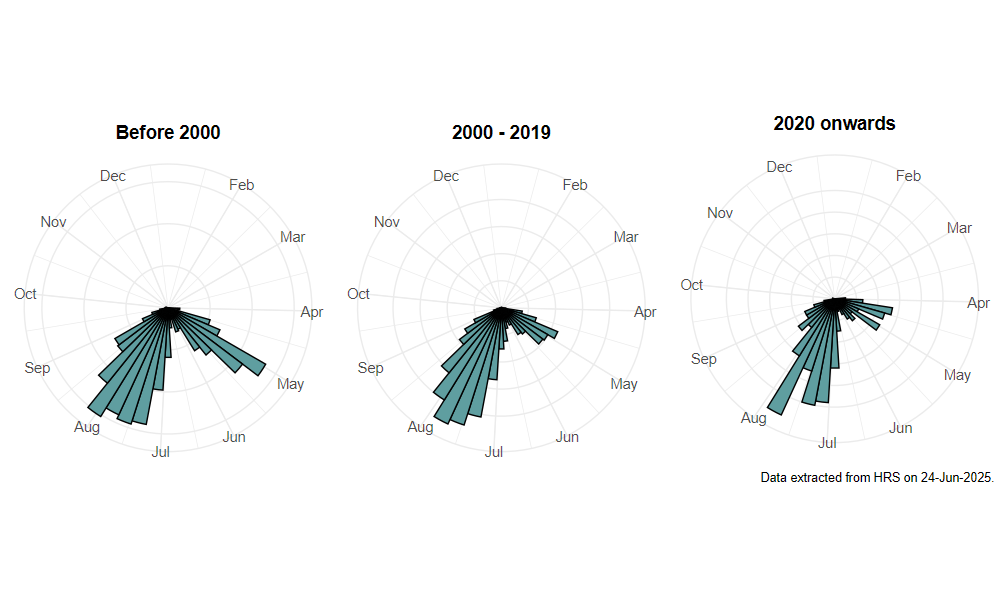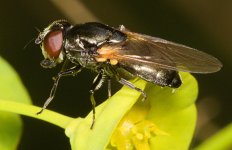Cheilosia proxima (Zetterstedt, 1843)
Identification
Identification difficulty = 3. ![]()
![]() according to Ball & Morris, 20241
according to Ball & Morris, 20241
Synonymy
Includes Cheilosia species D & E of Stubbs and Falk (1983)2. Thse have been found, on further investigation, to represent the spring and summer generations of a single species.
Biology
The larva inhabits the roots of thistles Cirsium sp., especially Marsh Thistle Cirsium palustre. Adults are frequently found visiting white umbels such as Hogweed Heracleum sphondylium and flowering bushes such as Hawthorn Crataegus and Blackthorn Prunus spinosa, along woodland rides and edges (deciduous and coniferous), scrub and hedgerows. Males tend to hover quite high up near trees and bushes and both sexes frequently settle on sun-lit foliage at some height above the ground.
Flight period
The following plots show the number of unique records per week excluding those reported to be of immature stages.

Distribution
A widespread and common species north to Yorkshire and Cumbria, becoming scarcer further north, although records extend into northern Scotland.

Trends
The following plots show the Frescalo TFactor vs year and a map of the rescaled frequency (all records) for the species.
